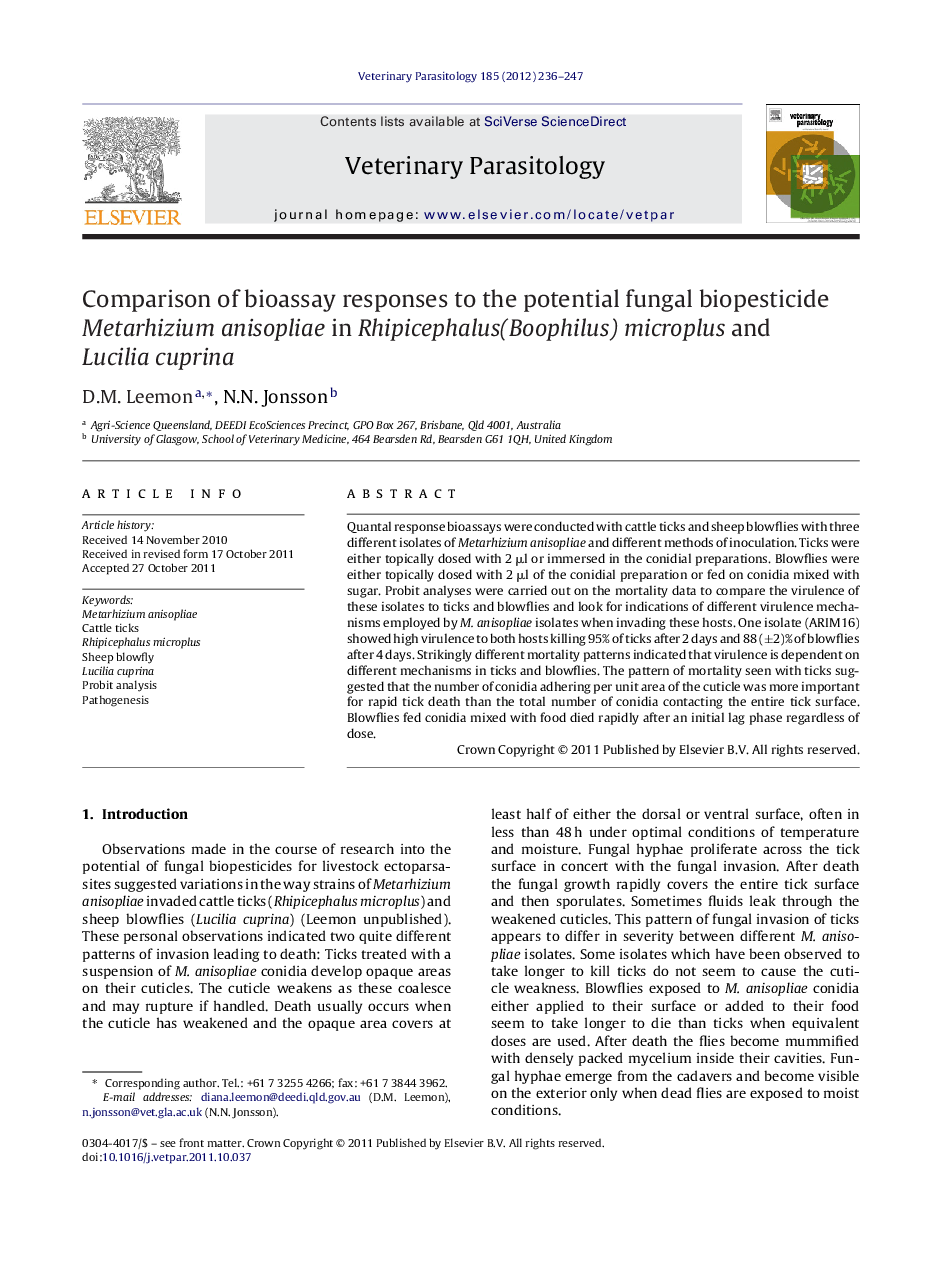| Article ID | Journal | Published Year | Pages | File Type |
|---|---|---|---|---|
| 5805142 | Veterinary Parasitology | 2012 | 12 Pages |
Quantal response bioassays were conducted with cattle ticks and sheep blowflies with three different isolates of Metarhizium anisopliae and different methods of inoculation. Ticks were either topically dosed with 2 μl or immersed in the conidial preparations. Blowflies were either topically dosed with 2 μl of the conidial preparation or fed on conidia mixed with sugar. Probit analyses were carried out on the mortality data to compare the virulence of these isolates to ticks and blowflies and look for indications of different virulence mechanisms employed by M. anisopliae isolates when invading these hosts. One isolate (ARIM16) showed high virulence to both hosts killing 95% of ticks after 2 days and 88 (±2)% of blowflies after 4 days. Strikingly different mortality patterns indicated that virulence is dependent on different mechanisms in ticks and blowflies. The pattern of mortality seen with ticks suggested that the number of conidia adhering per unit area of the cuticle was more important for rapid tick death than the total number of conidia contacting the entire tick surface. Blowflies fed conidia mixed with food died rapidly after an initial lag phase regardless of dose.
